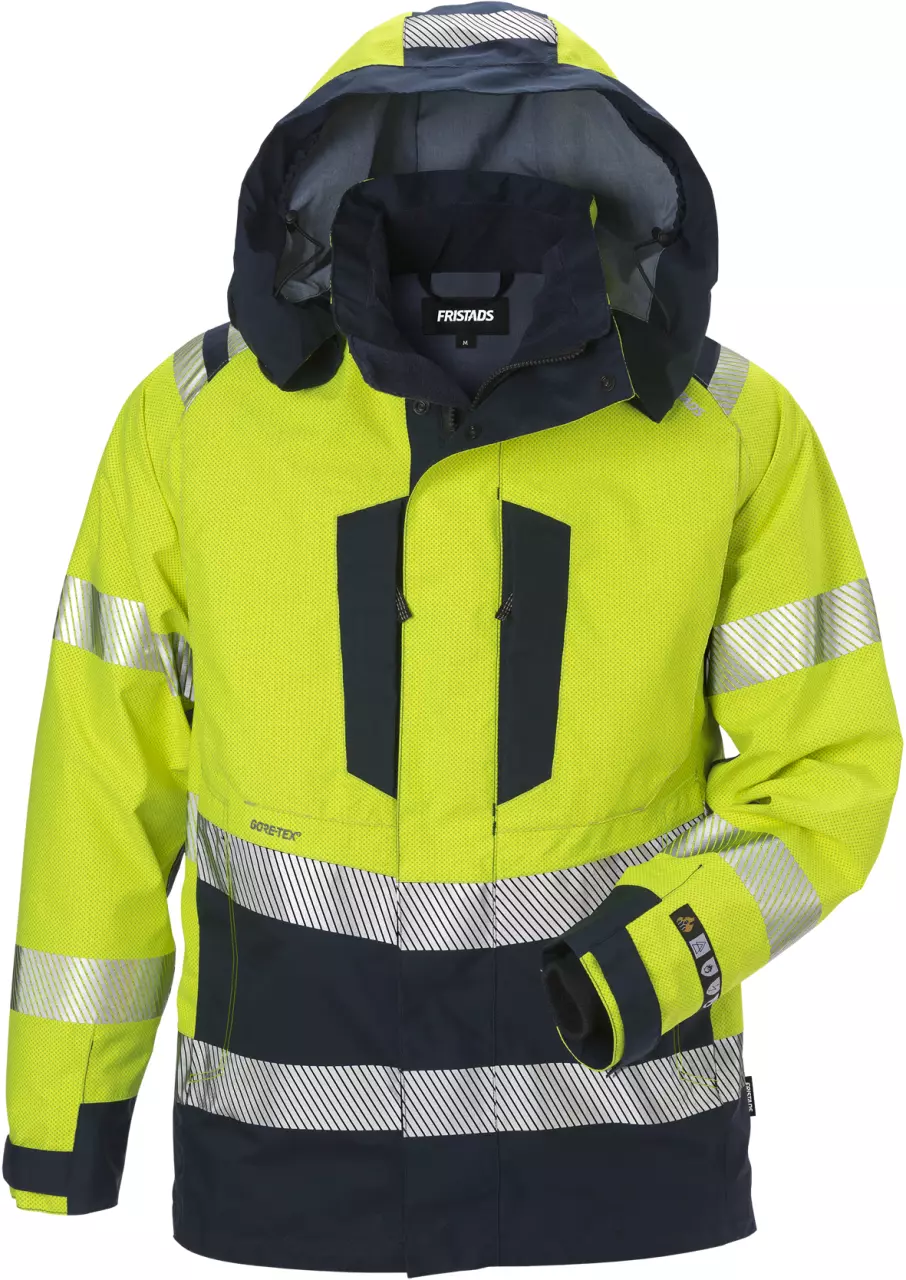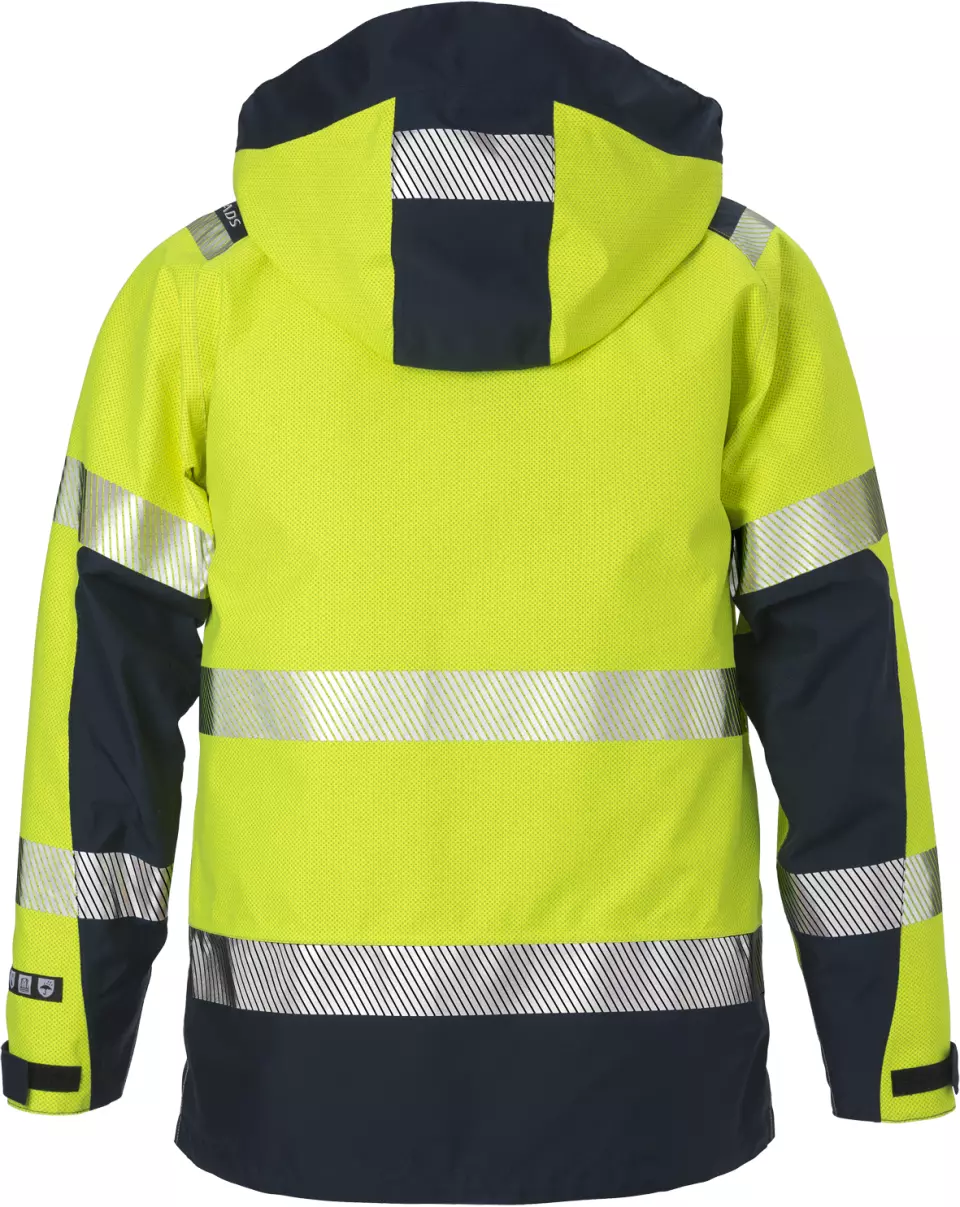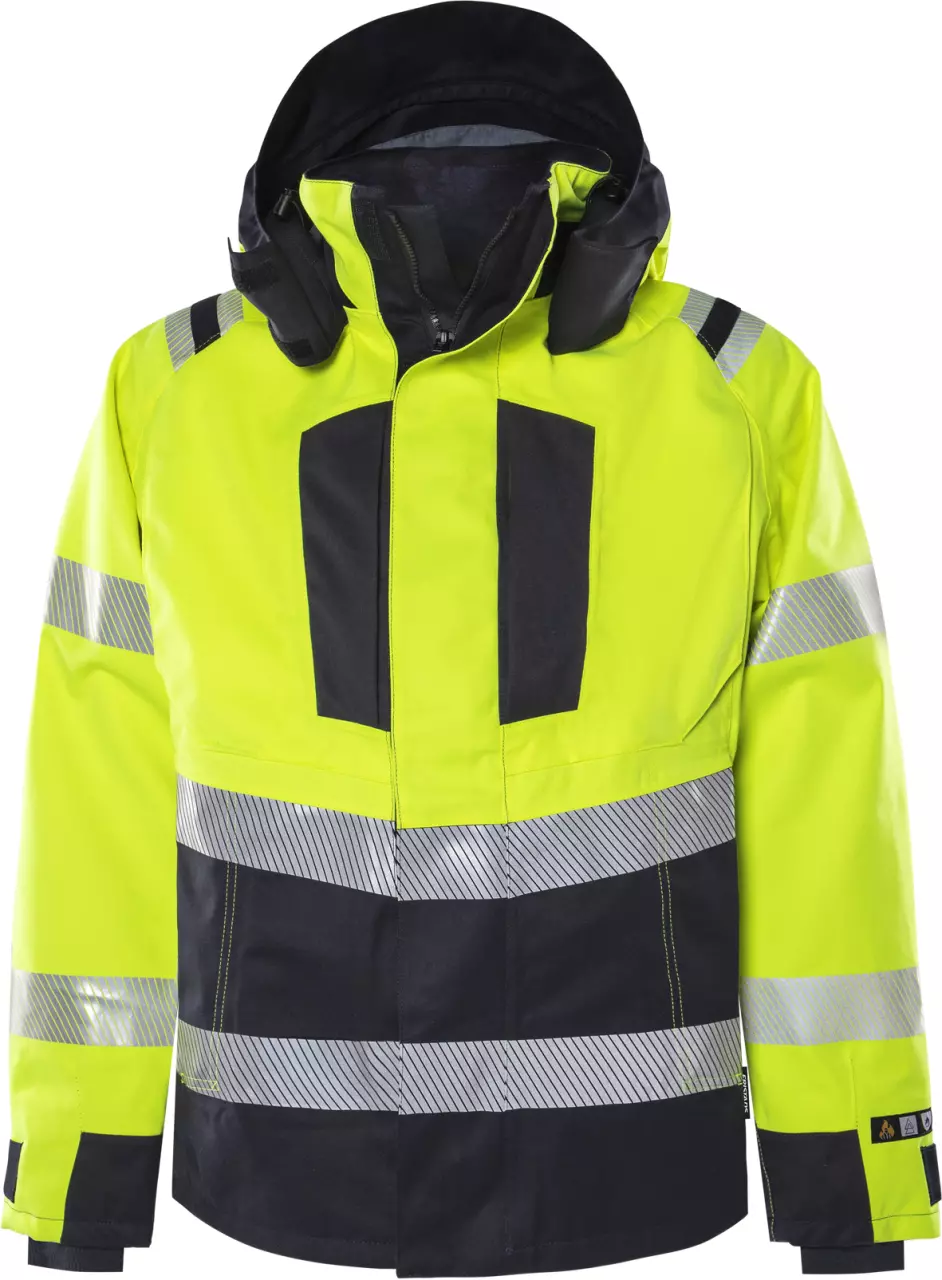

Features You'll Love

Material · Viscose, Carbon, Cotton, Aramid, Polyester
Closure Style · Zipper
Pocket System · Zipper Pocket
The method used to fasten the jacket or vest, affecting ease of use, security, and weather protection during work activities.
Zipper pockets securely hold your essentials, preventing loss and giving you peace of mind throughout your workday.

Jacket Type · Hooded
An integrated hood provides essential head protection from the elements, keeping you dry and focused on the job.

Cuff Style · Hook And Loop
EN 343 · Waterproofness Class 4, Breathability Class 4
How the sleeve opening closes or fits at the wrist, affecting protection from elements and comfort during movement.
This garment offers the highest level of waterproofness available. It is designed to keep you dry and comfortable during prolonged periods of heavy rain, providing maximum protection against severe weather conditions and driving rain.
This garment offers the highest level of breathability, ensuring maximum comfort during strenuous activity. It allows sweat to escape effectively, keeping you dry from the inside while protecting you from rain, snow, and other wet weather.

EN 20471 · Reflective Strip Area Grade 3
Provides the highest level of visibility for high-risk environments, such as working near fast-moving traffic (>60 km/h) or in dark/low light conditions. Garments cover the torso and have reflective strips on sleeves or full-length legs for 360-degree visibility.
Fristads
Flame Retardant Flamestat High Vis GORE-TEX PYRAD® Shell Jacket Class 3 4095 GXE
Flame Retardant Flamestat High Vis GORE-TEX PYRAD® Shell Jacket Class 3 4095 GXE
4.5 / 5
630,84 €
Choose size
Free delivery
Features You'll Love

Material · Viscose, Carbon, Cotton, Aramid, Polyester
Closure Style · Zipper
Pocket System · Zipper Pocket
The method used to fasten the jacket or vest, affecting ease of use, security, and weather protection during work activities.
Zipper pockets securely hold your essentials, preventing loss and giving you peace of mind throughout your workday.

Jacket Type · Hooded
An integrated hood provides essential head protection from the elements, keeping you dry and focused on the job.

Cuff Style · Hook And Loop
EN 343 · Waterproofness Class 4, Breathability Class 4
How the sleeve opening closes or fits at the wrist, affecting protection from elements and comfort during movement.
This garment offers the highest level of waterproofness available. It is designed to keep you dry and comfortable during prolonged periods of heavy rain, providing maximum protection against severe weather conditions and driving rain.
This garment offers the highest level of breathability, ensuring maximum comfort during strenuous activity. It allows sweat to escape effectively, keeping you dry from the inside while protecting you from rain, snow, and other wet weather.

EN 20471 · Reflective Strip Area Grade 3
Provides the highest level of visibility for high-risk environments, such as working near fast-moving traffic (>60 km/h) or in dark/low light conditions. Garments cover the torso and have reflective strips on sleeves or full-length legs for 360-degree visibility.
Product description
The Flamestat shell jacket provides high-level protection for demanding work environments requiring flame protection, arc flash protection, and high visibility features. The jacket is made from two-layer GORE-TEX PYRAD® material that is windproof and waterproof yet breathable. The inherently flame-resistant construction and multi-norm certification make it a versatile choice for industrial use.
Product features:
- Two-layer GORE-TEX PYRAD® material
- Dirt and oil repellent surface
- Adjustable, detachable lined hood with drawstring
- Reflective details on shoulders
- Two chest pockets with flaps and hook-and-loop fasteners plus zippers, one with D-ring
Technical specifications:
- Material composition: 99.4% polyester, 0.6% carbon fiber
- Lining: 50% meta-aramid, 50% flame-retardant viscose
- Weight: 220 g/m², lining 130 g/m²
- Water column value 10,000mm
- Breathability RET 8.33
Recommended applications:
- Heat and flame protection
- Welding
- Work requiring electrostatic properties
- Arc flash protection
- Limited protection against liquid chemicals
Standards:
- EN 61482-1-2 APC 2
- EN 61482-1-1 ELIM: 40 cal/cm²
- EN ISO 11612 A1 A2 B2 C1 D3 E3 F1
- EN ISO 11611 A1 A2 class 2
- EN 1149-5
- EN 13034 type PB [6]
- EN ISO 20471 class 2 in sizes XS-S and class 3 in sizes M-3XL
- EN 343 class 4/4
- ÖKO-TEX® certified

